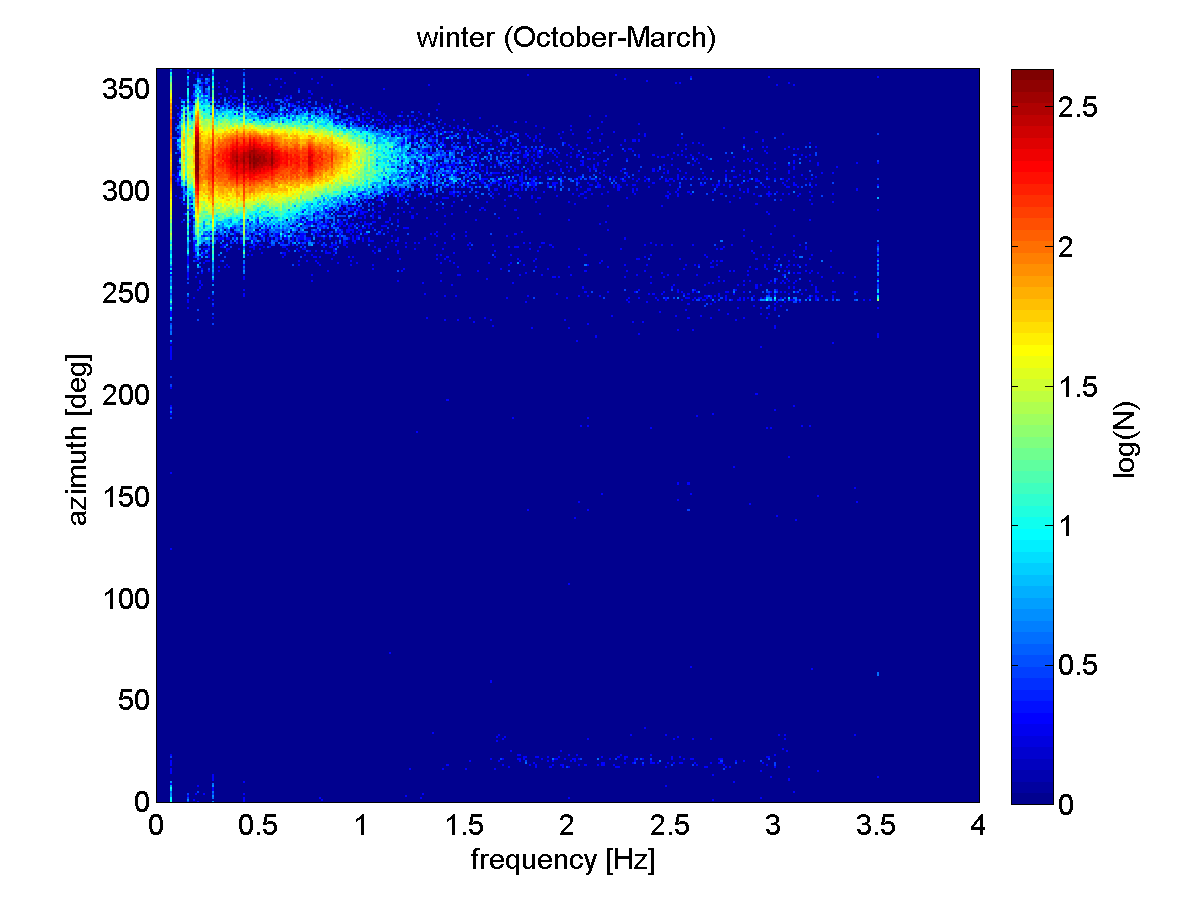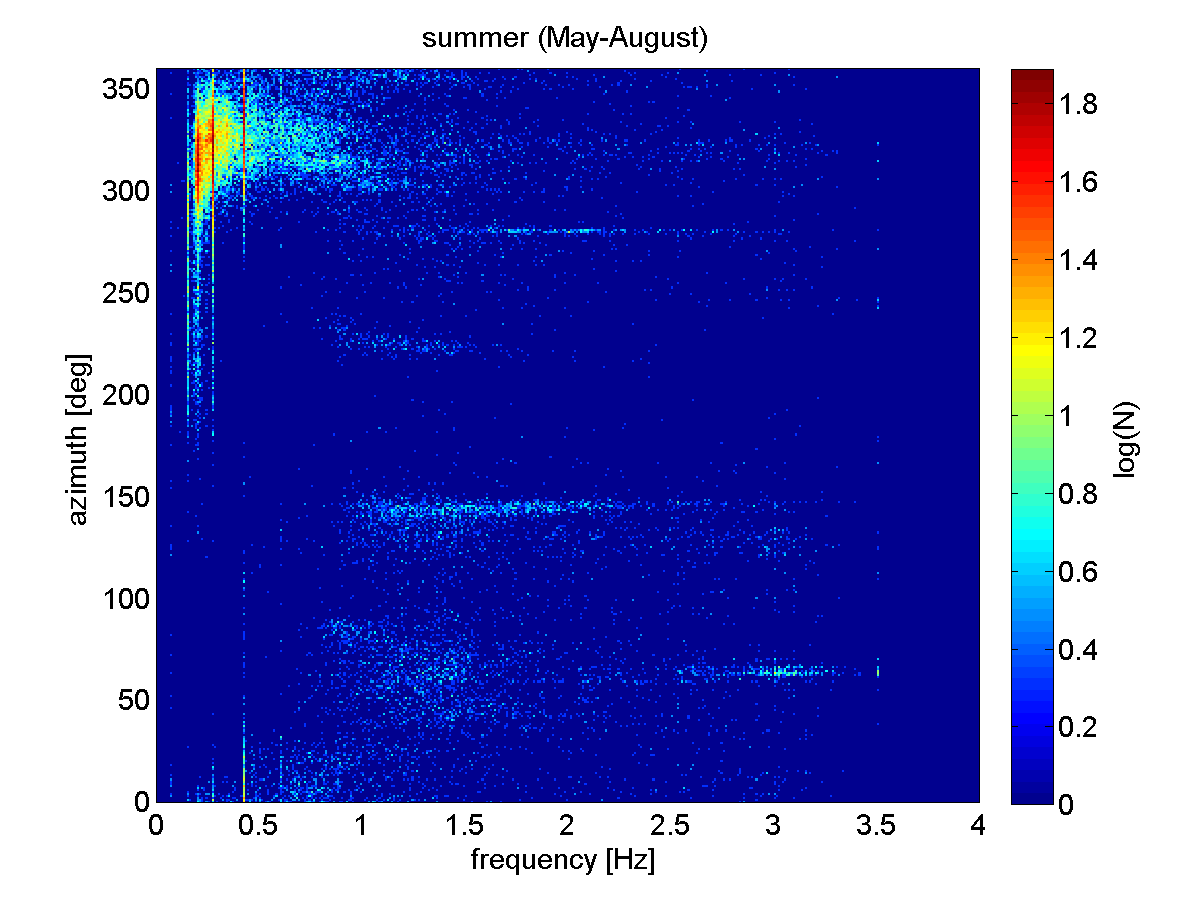Infrasound undergoes only little attenuation and can propagate over large distances providing information not only about distant processes but also about the atmosphere, including stratosphere, through which it propagates as the local temperature and winds influence the propagation.
Small aperture infrasound array Panska Ves (50°31″N 14°34″E; PVCI) has been in regular operation since 2014. Its detection range is 0.5-4 Hz. The seasonal regime of infrasound arrivals, determined by seasonal reversal of zonal stratospheric wind is clearly visible in Fig.1. and Fig.2. In winter, arrivals of microbaroms from the Northern Atlantic (back-azimuths of 290-340°) dominate. In summer, infrasound arrivals are diverse. Signals generated in industrial areas in Southern Poland, particularly in the opencast mine Lubin and in Silesia region are repeatedly registered, arrivals from the azimuths around 45° and 95-100°, respectively. Apart of these stationary sources, infrasound observations at PVCI include signals generated by convective storms in Central Europe, by bolides, and earthquakes. In collaboration with the members of Central and Eastern European Infrasound Network, detections of industrial explosions and North Sea Sonic booms are performed.
Large aperture infrasound array Western Bohemia (50.25°N 12.44°E; WBCI) has been deployed in 2016. It is intended for observations of low frequency infrasound near the acoustic cut-off in the range 0.0033-0.4 Hz. Infrasound arrivals from the north-west are recorded in winter in time periods, when distinct lows and pressure gradients were formed above the Northern Atlantic. The signal frequencies were between 0.01 and 0.1 Hz. The WBCI array is also intended for observation of atmospheric gravity waves; the individual sensors measure the absolute pressure up to frequencies of 25 Hz.


